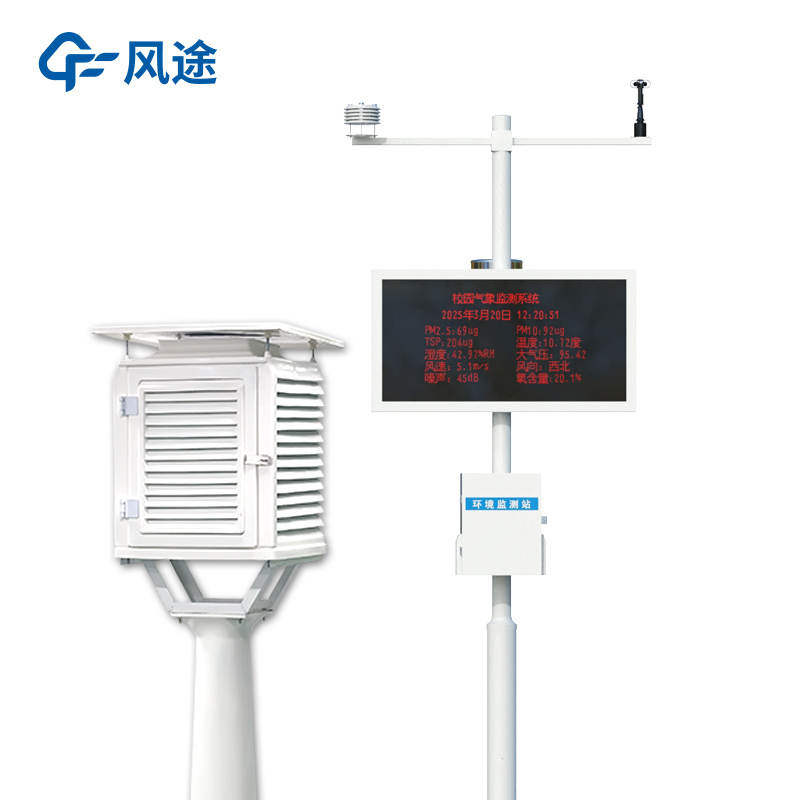Meteorological environment monitoring equipment supplier
Insist on doing high-precision customer favorite technology products
Today, many schools are opting for all-in-one automatic weather stations. These stations integrate various sensors onto a single mast, powered by solar energy or batteries. Data is transmitted wirelessly to classroom computers or display screens, and can even be published on the school website.
Automated data collection facilitates long-term recording and chart generation, which is more engaging for students in the digital age.
However, even when using automatic stations, it's advisable to retain some traditional instruments (such as rain gauges and evaporation pans). This allows students to operate them manually, gaining a more profound hands-on experience.
Today, let's take a closer look at the Campus Weather Station.
Stevenson Screen
This is a white, wooden, or plastic box with louvered panels on all sides. It houses thermometers and hygrometers inside.
Tipping Bucket Rain Gauge
Rainwater is collected through a funnel and directed into a tipping bucket mechanism. When a specific amount of water accumulates (e.g., 0.1mm or 0.2mm), the bucket automatically tips over to empty itself, simultaneously triggering an electrical signal that records the event. The total rainfall is calculated by counting the number of tips.
Ultrasonic Anemometer
This consists of two or three pairs of ultrasonic transducers arranged opposite each other. Its core principle is the "Time-of-Flight" method. As it has no moving parts, it completely avoids issues like mechanical wear or jamming due to freezing, resulting in a long lifespan and requiring almost no maintenance.
Sunshine Recorder
This instrument records the actual number of sunshine hours in a day.
The purpose of a Campus Weather Station is to integrate teaching with practice. By allowing students to personally participate in observing, recording, and analyzing data from these instruments, it not only helps them master basic meteorological knowledge but also cultivates their scientific inquiry skills, data analysis capabilities, and powers of observation regarding the natural environment.
Modern Campus Weather Stations are increasingly adopting the form of integrated automatic weather stations.
Integrated Sensors: Sensors for wind speed, wind direction, temperature, humidity, and atmospheric pressure are integrated into a compact housing.
Data Logger: Automatically records and stores data from all sensors.
Data Transmission: Data is transmitted in real-time to computers or cloud platforms via wired or wireless means (e.g., GPRS/4G/LoRa).
Data Display: Weather data is displayed in real-time on scrolling electronic display boards within the campus, or made accessible for query by teachers and students via the school website or mobile apps.
Educational Software: Supporting software can generate line graphs, bar charts, and facilitate data analysis, greatly enhancing the teaching of meteorological science and inquiry-based learning.
